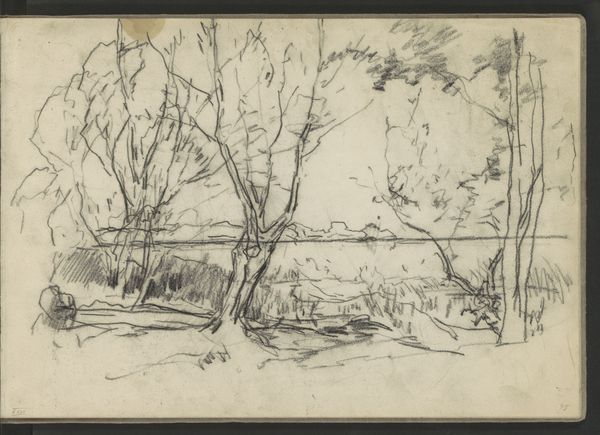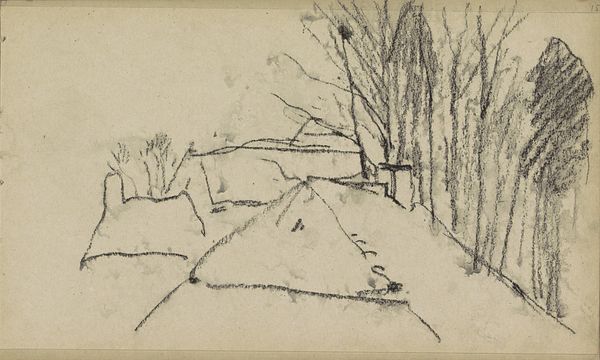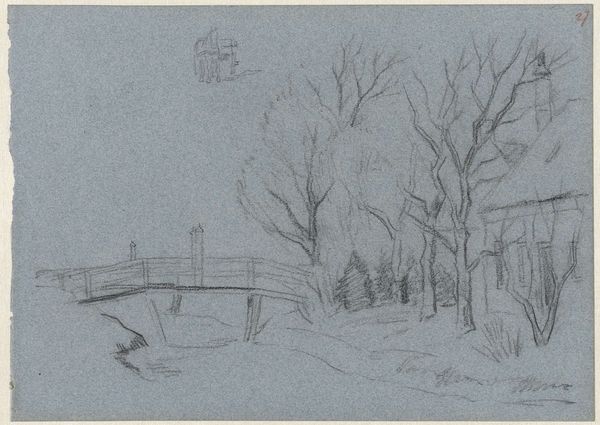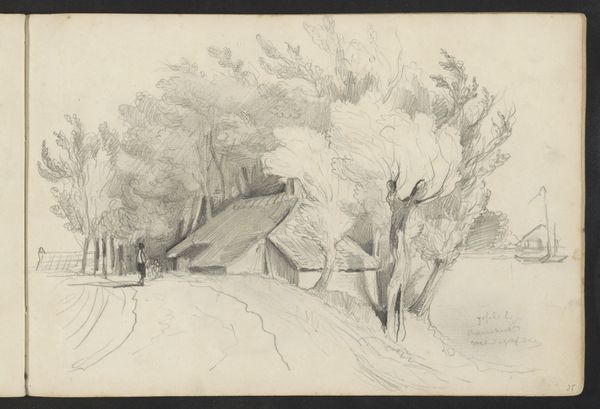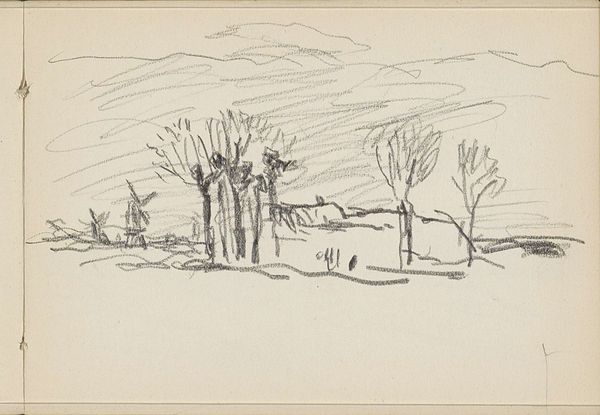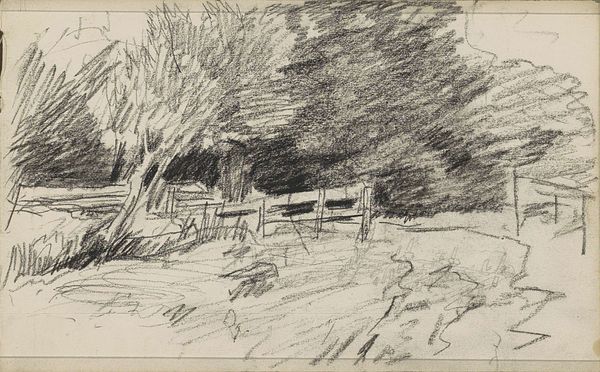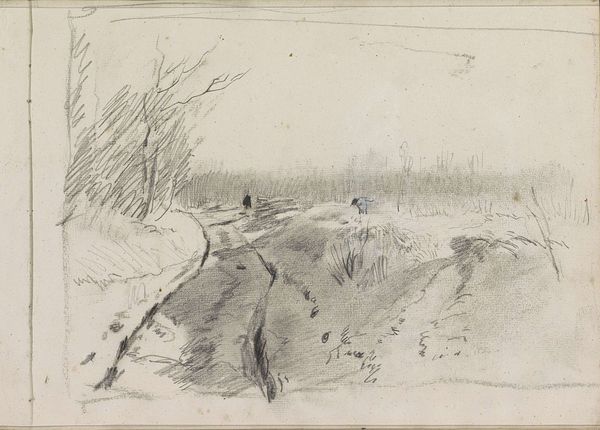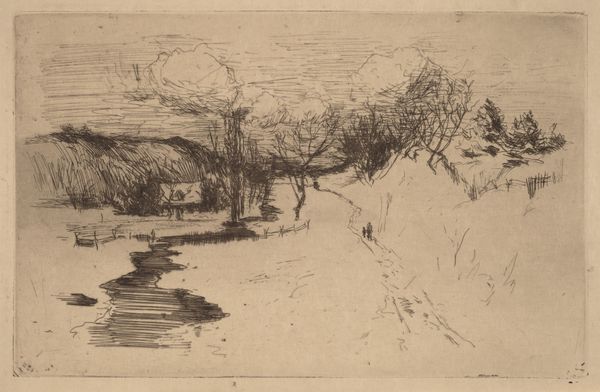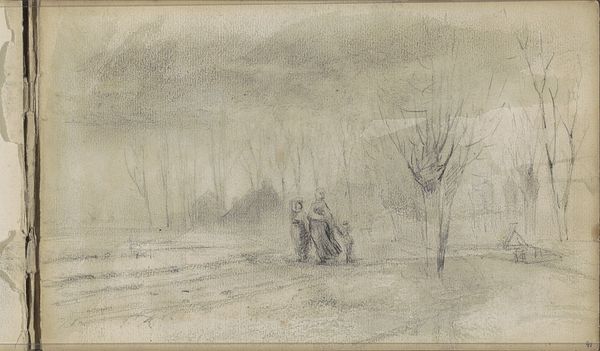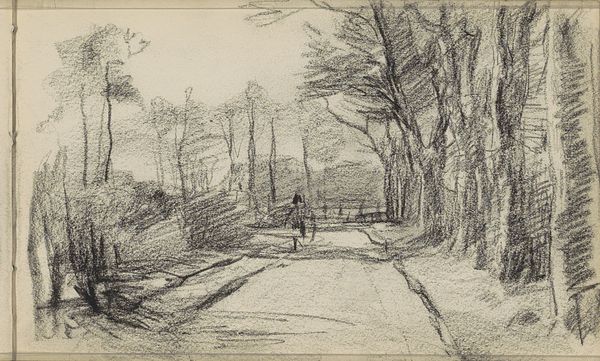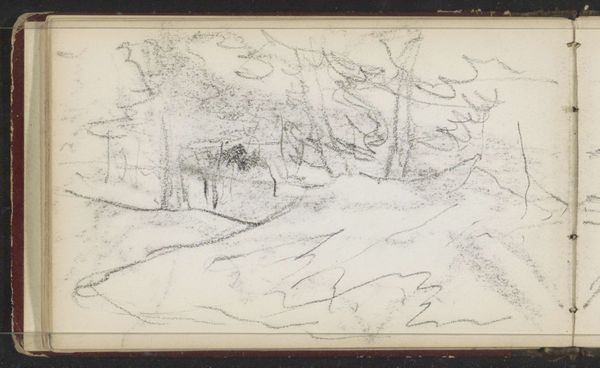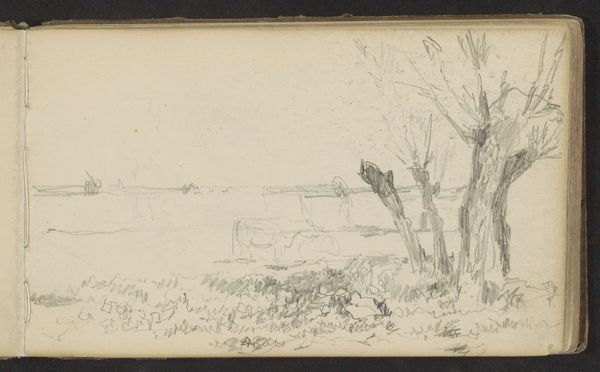
Copyright: Rijks Museum: Open Domain
Curator: This is Anton Mauve's "Landweg met een figuur op een kar," a pencil drawing from somewhere between 1848 and 1888. It's currently held here at the Rijksmuseum. What's your immediate take? Editor: Bleak, but beautiful. It feels like winter closing in, doesn't it? That solitary figure on the cart… makes you wonder about their journey, where they’re going. The sketchiness, the simplicity... it almost invites you to fill in the blanks, to complete the story. Curator: Precisely. Mauve's economy of line is remarkable here. Consider the social context; this work reflects the realities of rural life and transportation of the time. The means of depicting that reality is reduced to its essential strokes. He transforms labor into visual poetry. Editor: I see what you mean, there’s something very down-to-earth, tangible about it, but that lone figure against the vast landscape gets to me. I imagine myself there, wrapped up in scarves, the air biting. Makes you appreciate things like a warm fireplace! I get lost imagining that road and wonder, you know? Did he meet Vincent that day? Curator: Vincent van Gogh, Mauve's cousin-in-law, indeed was influenced by his landscape work. And regarding the tangible, this simple pencil on paper documents not only the scene, but the labor inherent in its rendering and what would’ve also been present in the reality of those figures during those harsh seasons. Editor: Definitely a romanticized version of harsh, wouldn't you say? Even though the sky’s muted, there’s light hinting through the branches. And you're right—seeing the sketch gives it a 'realness,' makes you aware of the human effort, which is so powerful, adding to its appeal beyond a snapshot. It feels like a glimpse of a fading era, viewed through very romantic lens, or is that just me? Curator: There is, of course, the appeal to romanticism, or what persists in impressionism. What materials afford to a scene always contributes something additional. Editor: Thinking about the bleakness before—now seeing the bare branches, they almost dance, right? As though this bleakness also has beauty in it if one can slow down to feel that dance. The world, after all, is what you make of it, literally, for the laborer, and visually for us gazing upon it. Curator: Yes, and this invites considering all aspects of this visual and cultural labor together. Editor: Makes you look at the landscape around you anew, doesn’t it?
Comments
No comments
Be the first to comment and join the conversation on the ultimate creative platform.
